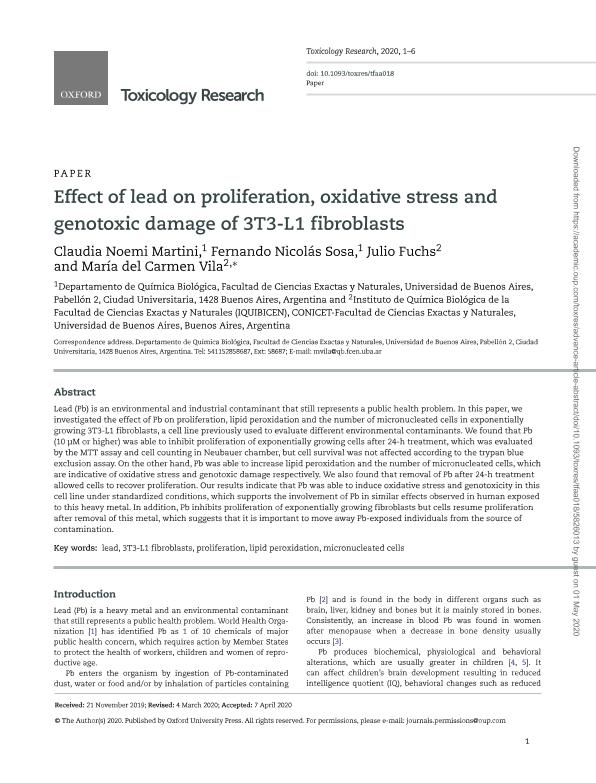Artículo
Effect of lead on proliferation, oxidative stress and genotoxic damage of 3T3-L1 fibroblasts
Fecha de publicación:
04/2020
Editorial:
Oxford University Press
Revista:
Toxicology Research
e-ISSN:
2045-4538
Idioma:
Inglés
Tipo de recurso:
Artículo publicado
Clasificación temática:
Resumen
Lead (Pb) is an environmental and industrial contaminant that still represents a public health problem. In this paper, we investigated the effect of Pb on proliferation, lipid peroxidation and the number of micronucleated cells in exponentially growing 3T3-L1 fibroblasts, a cell line previously used to evaluate different environmental contaminants. We found that Pb (10 μM or higher) was able to inhibit proliferation of exponentially growing cells after 24-h treatment, which was evaluated by the MTT assay and cell counting in Neubauer chamber, but cell survival was not affected according to the trypan blue exclusion assay. On the other hand, Pb was able to increase lipid peroxidation and the number of micronucleated cells, which are indicative of oxidative stress and genotoxic damage respectively. We also found that removal of Pb after 24-h treatment allowed cells to recover proliferation. Our results indicate that Pb was able to induce oxidative stress and genotoxicity in this cell line under standardized conditions, which supports the involvement of Pb in similar effects observed in human exposed to this heavy metal. In addition, Pb inhibits proliferation of exponentially growing fibroblasts but cells resume proliferation after removal of this metal, which suggests that it is important to move away Pb-exposed individuals from the source of contamination.
Archivos asociados
Licencia
Identificadores
Colecciones
Articulos(IQUIBICEN)
Articulos de INSTITUTO DE QUIMICA BIOLOGICA DE LA FACULTAD DE CS. EXACTAS Y NATURALES
Articulos de INSTITUTO DE QUIMICA BIOLOGICA DE LA FACULTAD DE CS. EXACTAS Y NATURALES
Citación
Martini, Claudia Noemí; Sosa, Fernando Nicolás; Fuchs, Julio Silvio; Vila, María del Carmen; Effect of lead on proliferation, oxidative stress and genotoxic damage of 3T3-L1 fibroblasts; Oxford University Press; Toxicology Research; 9; 3; 4-2020; 158-163
Compartir
Altmétricas




